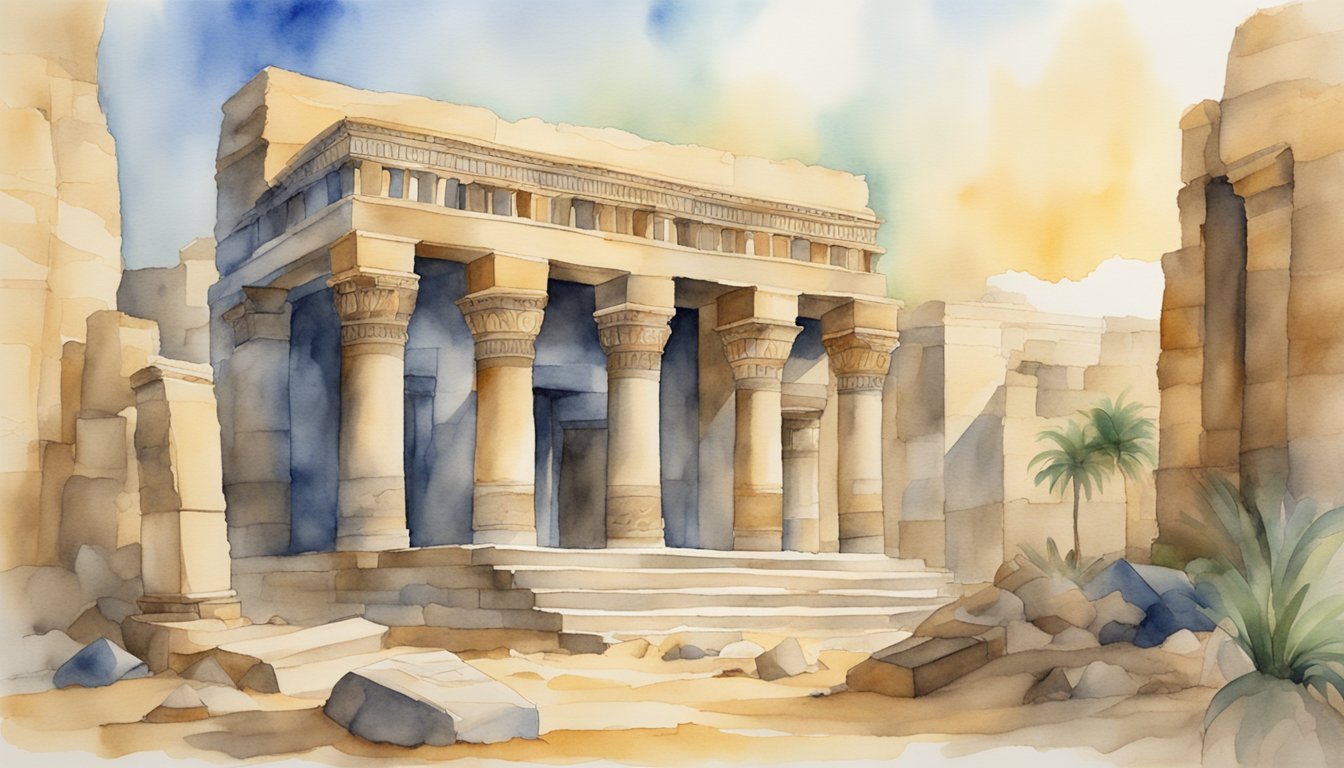The Rise of Cleopatra
Cleopatra VII‘s ascension to the Egyptian throne marked a significant chapter in ancient history, intertwined with political intrigue and dynastic legacies.
From her early beginnings to her critical political alliances, Cleopatra’s rise was a calculated series of steps that cemented her position as a queen.
Early Life and Ascension
Cleopatra VII, born in 70 or 69 BCE, was the daughter of Ptolemy XII, also known as Auletes, and was later educated in politics, philosophy, and languages.
She ascended to the throne at the age of 18 after the death of her father in 51 BCE.
Following the customs of the time, she co-ruled with her younger brother Ptolemy XIII.
Their joint rule, however, was far from harmonious.
Cleopatra soon found herself engaged in a bitter power struggle with her brother, one that would involve both military and political maneuverings.
Their sibling rivalry set the stage for Cleopatra’s sole reign and the subsequent partnerships she formed to solidify her power.
Political Alliances and Reign
The intersection of Cleopatra’s reign with the Roman empire’s political ambitions played a crucial role in the formative years of her rule.
After being forced to flee Alexandria due to the growing influence of her brother and his advisors, Cleopatra formed a pivotal alliance with Julius Caesar, securing her reinstallation as Egypt’s ruler.
Cleopatra and Caesar’s union bore a son, Caesarion, who Cleopatra positioned as her co-ruler, strengthening her dynasty’s claim to the throne.
After Caesar’s assassination, she would form yet another significant alliance with a powerful Roman—Mark Antony.
This relationship was both a romantic connection and a political strategy that resulted in the birth of three children and solidified her political influence for a time.
Infused with drama, her partnerships with the roman titans Caesar and Antony not only shaped her reign but also underscored the complex dynamics between Rome and Egypt.
Her ability to navigate and at times manipulate these political waters testified to her reputation as a savvy and strategic ruler.
Cleopatra’s Downfall and Legacy

Cleopatra’s ultimate demise was shaped by her romantic affiliations with powerful Roman leaders and her quest to preserve the Ptolemaic dynasty.
Her so-called charm and beauty captivated not only the hearts of her lovers but also the imagination of posterity, influencing cultural perceptions and depictions for centuries.
Romantic Entanglements and War
Cleopatra’s liaisons with Julius Caesar and Mark Antony were pivotal to her reign and downfall.
She met Caesar during his invasion of Egypt, and their union produced a son, Caesarion.
Later, she allied with Mark Antony against Octavian in a struggle for control of the Roman Empire.
Their defeat at the Battle of Actium in 31 BC was a turning point, marking the beginning of Cleopatra’s end and the rise of Octavian, later Augustus, as the unchallenged ruler.
Death and Aftermath
Cleopatra’s death, traditionally believed to be a suicide by asp bite in 30 BC, marked the conclusion of the Hellenistic era and Egypt’s annexation as a province of the Roman Empire.
With her passing, the legacy of the Pharaohs and the Ptolemaic Dynasty concluded, and her son by Caesar, Ptolemy XV, known as Caesarion, was killed, thus preventing any potential successor from laying claim to the throne.
Cultural Impact and Modern Depictions
Cleopatra’s life has had an enduring cultural impact, from ancient works to Hollywood films.
She has been portrayed variously as a goddess, diplomat, and intelligent monarch through the propagation of Roman propaganda and later dramatizations.
Her capability in speaking multiple languages and understanding Egyptian customs connected her more closely to her subjects than previous Ptolemies.
The duality of her depiction, as a magnetic queen and tragic figure, continues to captivate scholars and artists alike.




